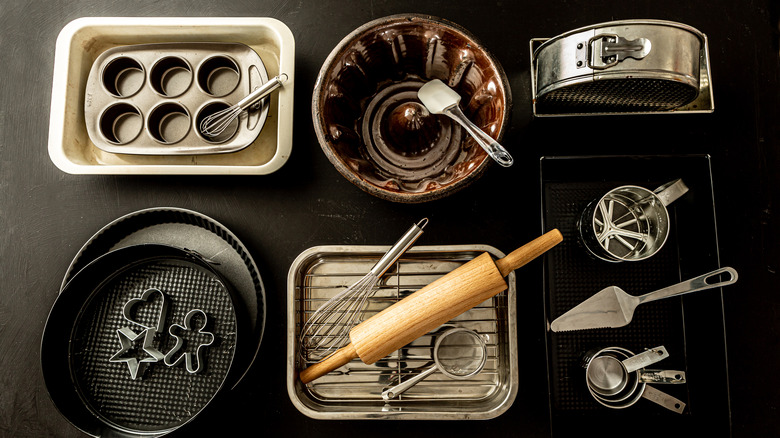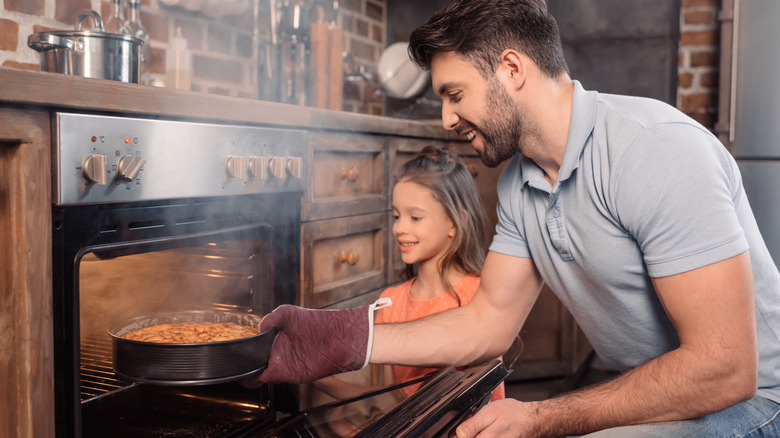What You Need To Know About Using A Dark Baking Pan
When it comes to baking, the recipe is just one part of the equation — your equipment also plays a big role in how your dish turns out. There are countless options on the market, from lighter-hued baking pans and glass options to darker or even colorful alternatives. While you might assume that they're all interchangeable, that's not quite the case. You certainly can use any type of pan you like best when baking, but you may want to tweak your recipe just a bit in order to ensure the best results. When you're using a dark baking pan, there are two main adjustments you should be making, and they have to do with the temperature and the cooking time.
First of all, whatever temperature your recipe lists, lower it by about 25 degrees Fahrenheit if you're using a dark baking pan, as King Arthur Baking Company suggests. Just as you might feel warmer when wearing a black t-shirt on a hot day outdoors in comparison to a white t-shirt, a darker pan absorbs the heat in your oven much faster than its paler counterparts. While this might seem ideal (less waiting!), in reality, it can lead to a more uneven bake, with the exterior turning a golden brown long before the interior is ready to come out of the oven. Lowering the temperature helps prevent the bottoms or sides of your baked goods from becoming way too brown before the interior is cooked through.
How to change the cooking time — and how to hack your dark pans
The second major thing to be aware of when using a dark baking pan, as Taste of Home explains, is the cook time — namely because the increased efficiency in absorbing and distributing heat will make you want to start testing your bake's progress about 10 minutes before the recipe says it'll actually be done.
Dark cake pans are particularly well-suited to recipes where you want to encourage more browning along the sides and bottom, such as when you are roasting vegetables, or even making something like pie, which has the potential to develop a soggy or pale bottom, as The Kitchn recommends. However, if you are baking a cake and are concerned about the exterior becoming too brown, there are a few things you can do before you rush out to buy new, light-colored baking pans, in addition to lowering the temperature and reducing the time. A silicone baking mat, for instance, can help slow browning if you're making baked goods such as cookies, and if you're making cakes or items in a round tin, Cook's Illustrated suggests wrapping aluminum foil around the baking pan edges.
So, next time you are deciding which baking pan to reach for, consider the recipe you're making and the results you want. If you only have dark baking pans on hand, you may need to make a few subtle tweaks in order to guarantee picture-perfect results.

